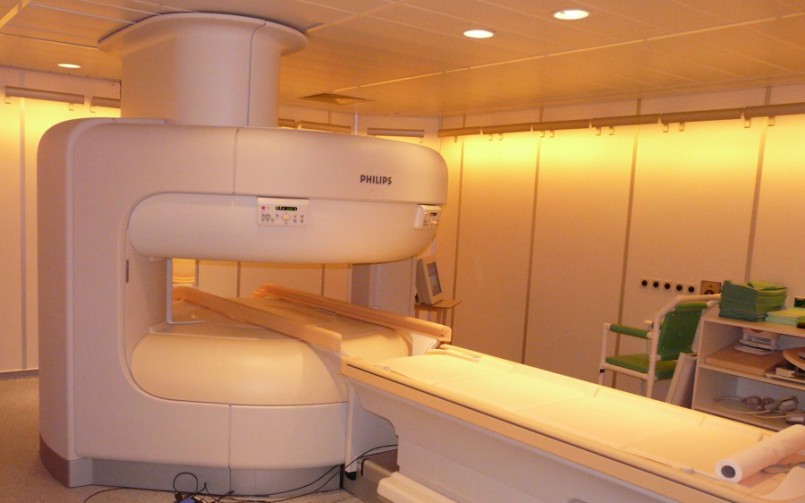
The Bimek SLV in an MRI
How my back pain optimised the spermatic duct valve.
In 2014 I suffered from a constant and ever-increasing back pain. It was definitely a result of my job, which had me spending hours and hours driving around in a car. I should have exercised to compensate, but I was too lazy to worry about that at the time. Fortunately, I’ve changed that attitude.
The pain had steadily increased, until one morning it became so unbearable, I didn’t know what hit me and just collapsed onto my bed. I made it to the nearest hospital’s emergency room via painkiller injections and an ambulance. The doctors had no clue what was wrong with me. All bodily functions and reflexes in my legs were working fine. An MRI would provide the answers.
Got Metal? No MRI
In the preliminary interview I had truthfully indicated that I had a metal object in my body, which caused the radiologist to cancel the procedure. He discovered, with the spermatic duct valve design I brought along, that the protective caps were made of implant steel. Even with my objections about the fact that the material was 1.4441 non-magnetic, he did not allow it due to the ring form. It could have led to serious injury by either heating up or by the components moving around because of the strong magnetic fields during the MRI.
So I was rolled back into the waiting room and had to wait for a CT appointment, which could be performed regardless of the valve.
Making MRIs impossible is not an option
An MRI is designed specifically to find illness or problems in the organs. At the time it was important for me that the Bimek SLV become 100% MRI-compatible. In case of illness future users should also be able to undergo an MRI without any problems.
After my visit to the hospital, I improved the design and materials used in the SLV in a way that the current spermatic duct valve, the fourth generation (LOT 04), is also able to fulfil this requirement.
The simpler, the better
Time and time again there are requests to make the Bimek SLV Smartphone compatible. This is not impossible. Although, it would turn the passive valve into an active implant, like a pacemaker or a cochlear implant, rendering MRI examinations impossible.
When creating the Bimek spermatic duct valve, I wanted to develop a simple contraceptive device that is suitable for everyday use. It can be operated by hand, can be worn for a lifetime, does not require maintenance and, because of its analog design, does not even need new batteries or a recharge after a certain amount of time.
And I succeeded. The Bimek SLV is perfect, just the way it is.
Kind regards
Clemens Bimek
Picture: Wikipedia